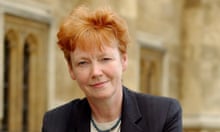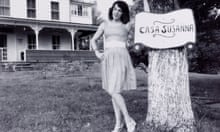By her own account, it took Susan Meiselas, a celebrated Magnum photographer and former recipient of a MacArthur “genius” fellowship , some time to get interested in the Black Country. Invited by Multistory, a community arts charity based in Sandwell, near Birmingham, to seek inspiration there – the organisation has previously worked with other Magnum photographers, including Martin Parr – initially, she found herself just a touch underwhelmed.
“My first trip didn’t exactly give me the sense that I should return there tomorrow,” she says. “I couldn’t grab on to anything; nothing held me. But Emma Chetcuti [Multistory’s director] is persistent. The next year, she said: ‘Why don’t you give it another try?’ This time, I did some reading first, which is how I found out about the high rates of domestic violence in the region.” Finally, she felt she was getting somewhere: “This connected to a 1990 project of mine, when I worked on the same issue in San Francisco.” (Meiselas is American, born in Baltimore.)

With Multistory’s help she developed a collaborative project based around the experiences of women in a number of refuges in the area, the results of which have now been published in a book called A Room of Their Own.
Turning its pages, the first thing you notice is how startlingly few people appear in the pictures she took over several months in 2015 and 2016 (a period when, as their funds were cut, the refuges “had to downsize fairly dramatically”). On the rare occasions when a woman can be seen, her face may be obscured; the presence of any children is usually indicated only by the sight of scattered toys and tiny T-shirts drying on radiators. Was it challenging, finding a way to tell the women’s stories while also protecting their identities? “Yes, it was difficult,” she says. “It wasn’t only that I had to protect individuals. I had to protect the refuges collectively, too, because in order to reduce the potential for stalking, women are frequently moved from one part of the country to another, the better to break the link with family and friends.”
Feeling welcome in these places was, on her part, “a long process”: the women, whose trust she had to earn, didn’t open the doors to their rooms to her straight away, and their transience – many stay only for a couple of days – sometimes prevented it happening at all. “Resettlement and reintegration is the goal,” she says. “These organisations respond to an emergency, but after that it’s about preparing for the next stage. As a photographer, you’re trying to develop relationships with people that are of substance, but the priority for these women was moving on, and while you hope for that for them, too, it was also the case that people I might have photographed on my first trip [she is based in New York] were not necessarily going to be there when I came back two months later.”

Best known for her photographs of war-torn Nicaragua and those she took in the 70s of American carnival strippers, Meiselas doesn’t set up her pictures. “The way I work is, in a sense, very traditional,” she says. “I am trying to capture the dynamic without imposing myself on it. Rather than directing people to get what I want, it’s about waiting for a moment I recognise. There’s a photograph [in the book] of a girl in a kitchen. She’s turning away from me, but I didn’t say: ‘please, show me your back’. I want my subjects to be in their own space psychologically.” One implicit theme of the book is what it means to be alone, together: “That’s why these photographs, compared to most of my work, are rather cool-seeming. It’s not an emotional environment. It’s a practical one. They are living collectively; the cabinets in the kitchen are all numbered.”
Though many of the photographs feature little more than a bed and a few piled possessions, they shouldn’t necessarily be taken at face value: “When a room is empty, is that a sign that someone doesn’t have anything? Or is it just a sign that they don’t want to stay?”

With their small repetitions, her pictures have, she hopes, a cumulative emotional power. But they also make a political point, which is that the work of a refuge is never done: “The deep, sad reality is that the need isn’t ever going away. In 1990 in San Francisco, I worked on a campaign to announce the first crisis line in the city, and I can tell you that the district attorney’s office and the special prosecutor were all thinking: this is all we need to do, and it will solve the problem. But it didn’t, of course.”
Nevertheless, she didn’t find working on this project bleak. Far from it. “What’s bleak is why there’s so much violence in our societies. Working with women who are working on themselves, and who have such self-awareness – that’s not bleak. The notion of empowerment is overused, but there is a sense of moving forward.”
She hasn’t yet had any responses to the book from those who appear in it, and she can’t be completely sure she ever will, which is something she feels odd about (in her practice, this has never happened before). “The institution doesn’t hold the women in any way once they leave,” she says. “It’s their choice to come back, to visit, to reconnect. Do they even know how to find me?” She thinks for a moment. “But yes, I would like to be able to put the book in their hands. It’s what I call the circle of return. You want to make that happen if you can.”
A Room of Their Own is a partnership project with Multistory and Creative Black Country (as part of the Arts Council of England’s Creative People and Places Programme). Multistory is supported by Sandwell council and Arts Council England. The book can be purchased from Multistory’s online shop at multistory.org.uk. A major retrospective of work by Susan Meiselas will be staged at Jeu de Paume in Paris next year







Comments (…)
Sign in or create your Guardian account to join the discussion